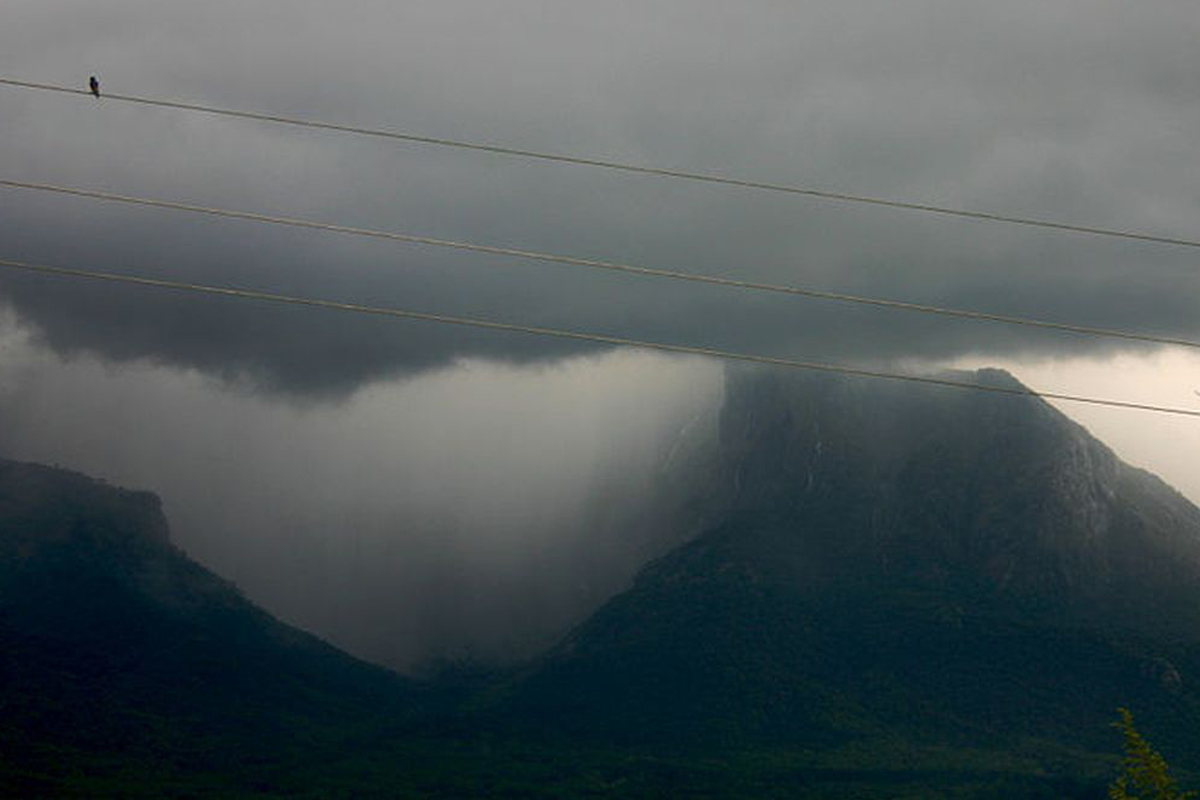High-profile Udhampur LS seat records around 70 pc polling
The Udhampur constituency sprawls from the plains of Kathua touching Punjab to the mountainous regions of Kishtwar and Doda.
The Indian subcontinent monsoon clouds drift from the Arabian Sea to the Himalayas are responsible for the incidents of cloudbursts.

Representational Image
We see many people getting injured and many losing their lives due to cloudburst every year. Recently we have witnessed several such incidents in the Himalayan region of India.
So what is a cloudburst?
According to IMD the occurrence of cloud bursts is a phenomenon which usually happens in the hilly regions, because mountains are the only land-form that is closer to clouds. It is a sudden aggressive rainstorm falling for a short period in a small geographical area. The rainfall rate is equal to or greater than 100 mm per hour. A cloudburst can be very dangerous as it commonly sweeps away people, animals, and portions of land on its way. It usually occurs in high altitude areas, due to the formation of a low-pressure on the top of the mountains. Interestingly they are sometimes welcomed as cloudburst irrigates crops very thoroughly.
Advertisement
Places more prone to cloudbursts
Places which are prone to cloudbursts frequently are Himachal Pradesh, Uttarakhand, and Jammu Kashmir. During the monsoon, chances of cloudburst is very common in the Himalayas and it affects thousands of people every year and causes loss of life, property, livelihood, infrastructure, and environment. Cloudbursts are very hard to predict as a very fine network of radar is required to detect it and installing such an infrastructure is very expensive.
Cloudbursts are caused by a phenomenal condition known as “Orographic lift”. A typical type of cloud is responsible for a cloudburst known as the ‘Cumulonimbus’ cloud.
Monsoon factor
The Indian subcontinent monsoon clouds drift from the Arabian Sea to the Himalayas are responsible for the cloudburst. These clouds filled with water droplets move across the plains and warm air currents keep pushing these clouds up, not allowing them to shed rain, more and more water droplets get collected and the clouds get bigger. As they move up a mountain or a hill, it soon stops moving since there is barely any wind up in the mountains, the warm air holds up the water droplets in the cloud, which burst due to high-pressure and rain comes gushing down.
The extent of destruction
The heavy downpour lasts for a short time but can cause a tremendous amount of destruction.
A cloudburst can suddenly dump 72,300 tonnes of water over one square acre.
Now the question emerges: why is it occurring so frequently in recent years?
The answer is Global warming which is attributed to the increase of cloudbursts, especially in the Himalayas. This accelerates the process of cloud formation from the sea and the warm air in the plain region pushes it faster towards the Himalayas, resulting in cloudbursts. It is possible to forecast the probability of cloudburst about six hours in advance by the use of “Doppler radars”.
Advertisement